THE PROCESS of SHORT SALES and FORECLOSURES
When foreclosed homes began to appear in 2006 after the housing boom, many real estate investors, and people attempting to buy a home at bargain prices, believed they could buy bank owned properties for below market value. Banks were already writing off crushing losses on homes where many stated income loan packages placed buyers into homes which they quickly realized they couldn’t afford. Many other purchasers became unemployed and couldn’t make monthly mortgage payments on unemployment or lesser paying jobs, while others intentionally supplied loan application information which was less than truthful to move into better homes and neighborhoods. There were also those who appeared to commit mortgage fraud while never intending to make a single mortgage payment.
Knowing the home would eventually go into foreclosure, often times the people living in these homes abandoned them in less than acceptable condition. Banks holding the mortgage on such homes were not ready to handle the volume of homeowners who defaulted on their loans. The answer to this was for banks to sell homes in “as-is” condition. Foreclosure departments quickly realized homes were not meeting FHA & VA loan guidelines after property inspections by appraisers determined the condition of foreclosed homes would not support lending money for the purchase.
Most contracts involved investors (below market value) during this time in a declining market with more foreclosures being added to inventory faster than bank foreclosure processors could handle. This created the process of short sales. Homeowners were now in a place to negotiate with the mortgage holder to sell the home for a lesser price while having the difference forgiven, sign a promissory note, or provide funds at closing for the difference.
In 2006, when short sales became a popular method used to sell a home by distressed homeowners, the process required them to give the bank with information related to recent comparable sales in the surrounding area, provide financial information to prove financial hardship, and produce a written statement which declares an acceptable reason to ask for short sale approval. This became a difficult task as bank asset managers in short sale departments literally had files of properties in distress stacked on their desks to process. The good news is lending institutions have increased the size of their short sale departments, put evaluation systems in place for short sale approvals, and properly trained employees to handle homeowners requesting short sale approval.
This brings us to 2011. Housing prices have been stabilized in Northern Virginia. Several factors include increased hiring and realignment in federal government positions in the Washington, D.C. area, along with several banks stopping foreclosures momentarily after allegations of improper conduct by signing attorneys surfaced in September 2010. This has limited the number of available homes for purchase which has stabilized regional prices. But this could change due to several factors including federal budget cuts, and the release schedule of foreclosures held in bank inventory. This rundown tells us one thing; buyers need to move cautiously.
THE REQUIRED STEPS OF A SHORT SALE:
(1) Notify the bank as soon as you find you are having trouble paying your monthly mortgage. You will be assigned an asset manager in the short sale department.You will be asked to give bank statements and pay vouchers for the last 6 months, along with W-2′s and tax returns over the past year. This will be accompanied by a hardship letter which explains why you have been forced to sell your home under short sale conditions.
(2) The bank will instruct you to contact a Realtor to list your home as available for purchase. The short sale process is much different from a standard residential sale. The Realtor you chose to coordinate your short sale should have a proven record of success. Please feel free to contact us for a short sale consultation if you are in Northern Virginia. The bank authorization to put your home on the market does not mean the bank will approve the sale, it is only the next step in the short sale process.
(3) The bank short sale negotiator needs written authorization to allow your Realtor of choice to start a conversation on your behalf. The Realtor will then give the listing agreement, and comparative marketing analysis while communicating the progress of selling your home.
(4) Your listing agent now actively markets your home while advocating on your behalf for bank approval, and arguing for the most favorable terms of the sale with the buyer’s agent upon contract acceptance. During this time the short sale processor will order an appraisal, and Broker’s Price Opinion (BPO). This ensures the listing agent has correctly priced the home to current market conditions, and this process gives the bank an independent evaluation on where the bank should ratify a contract offer.
(5) At this point your agent will continue contact with the bank, and all parties involved in servicing the original loan to insure the contract submitted receives approval under short sale terms. The seller is still responsible for any repairs required for contract and loan approval. If there are any outstanding liens against the property the seller will also be required to satisfy them before the contract is successfully closed.
The most important question for sellers: WHO PAYS REALTOR COMMISSIONS AND CLOSING COSTS? The short answer is it depends on the offer. If the bank receives a favorable contract all associated closing costs, commissions, and fees are usually waived.
SHORT SALE PROGRAMS & OPTIONS:
Related articles

